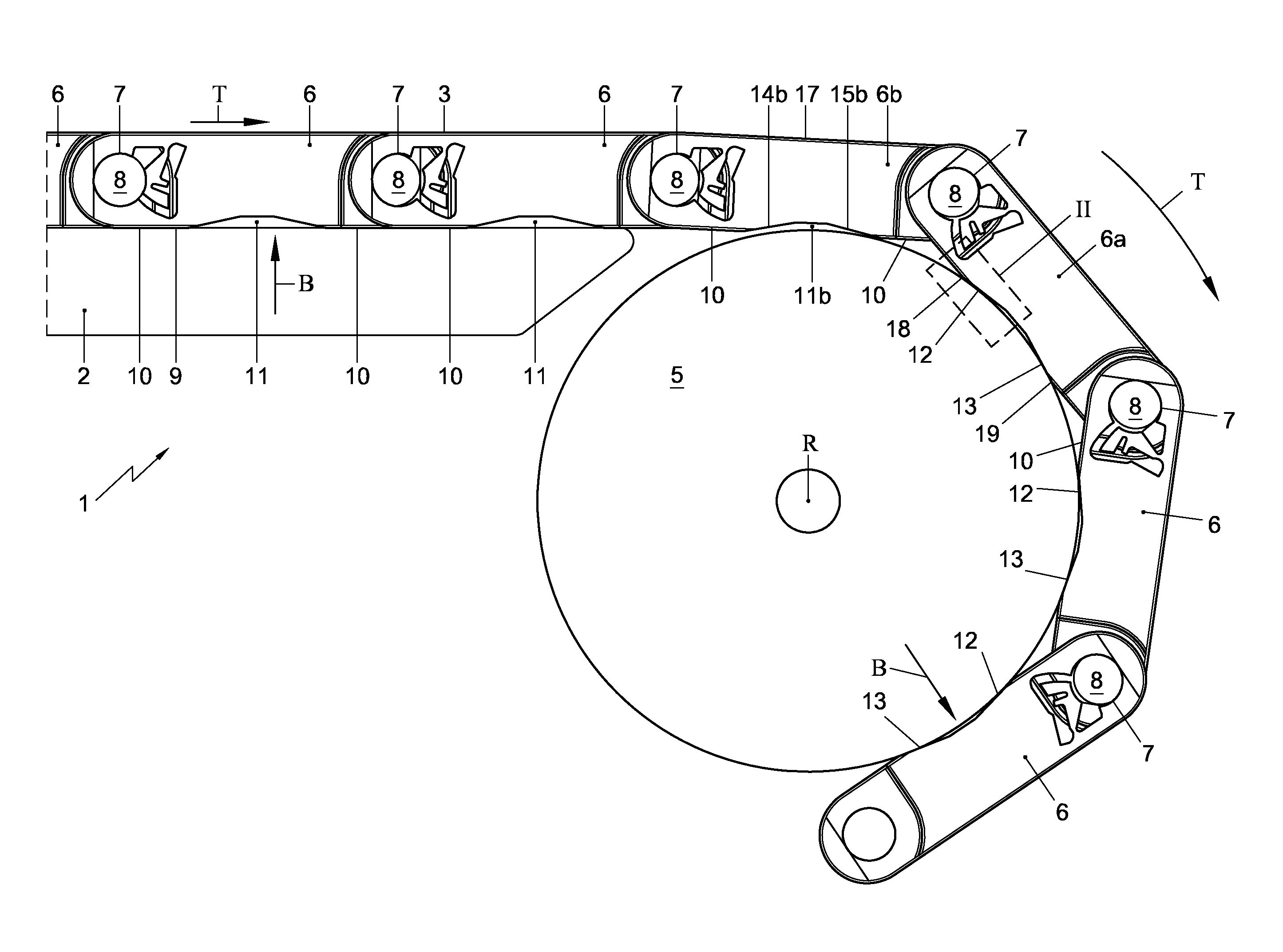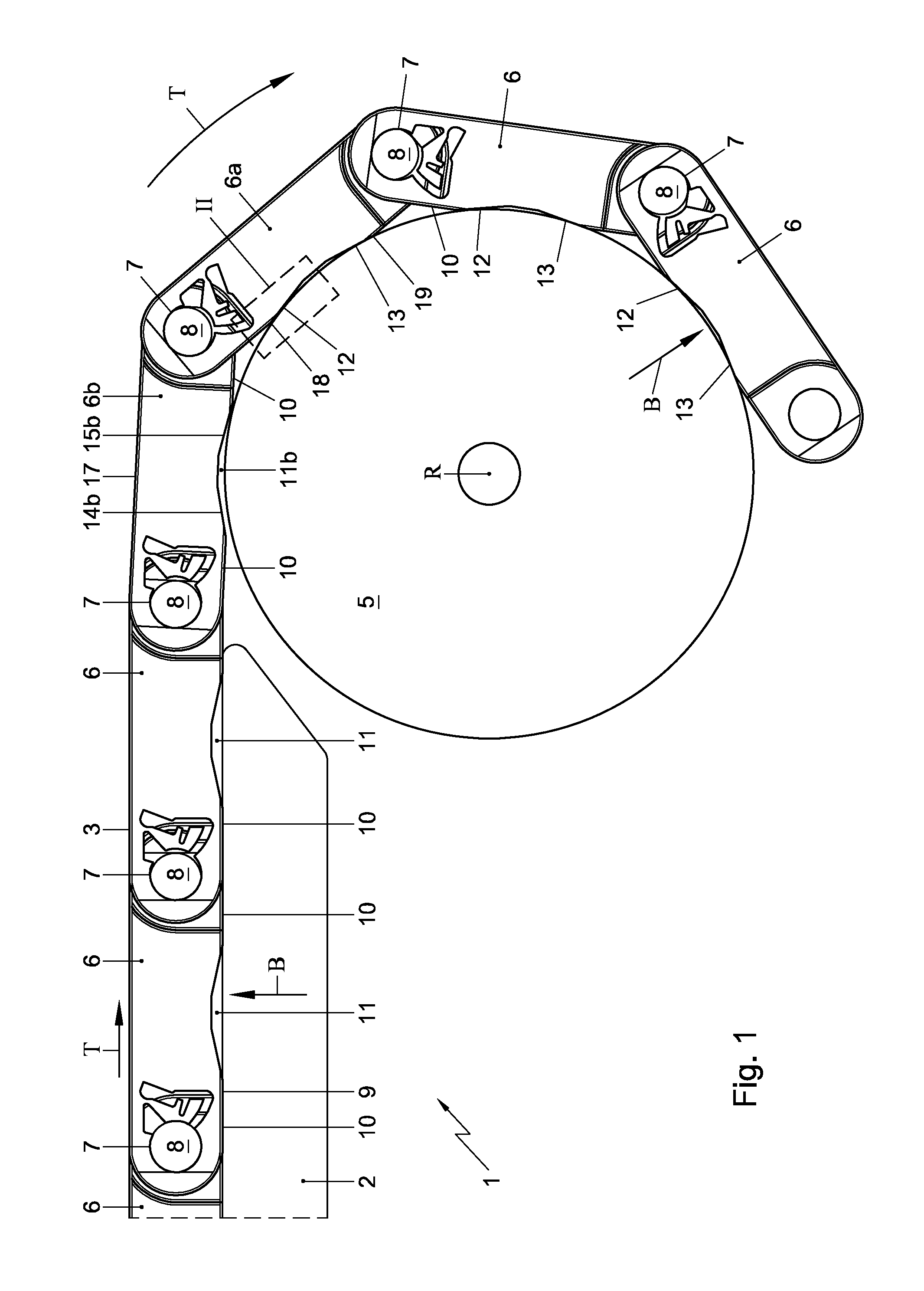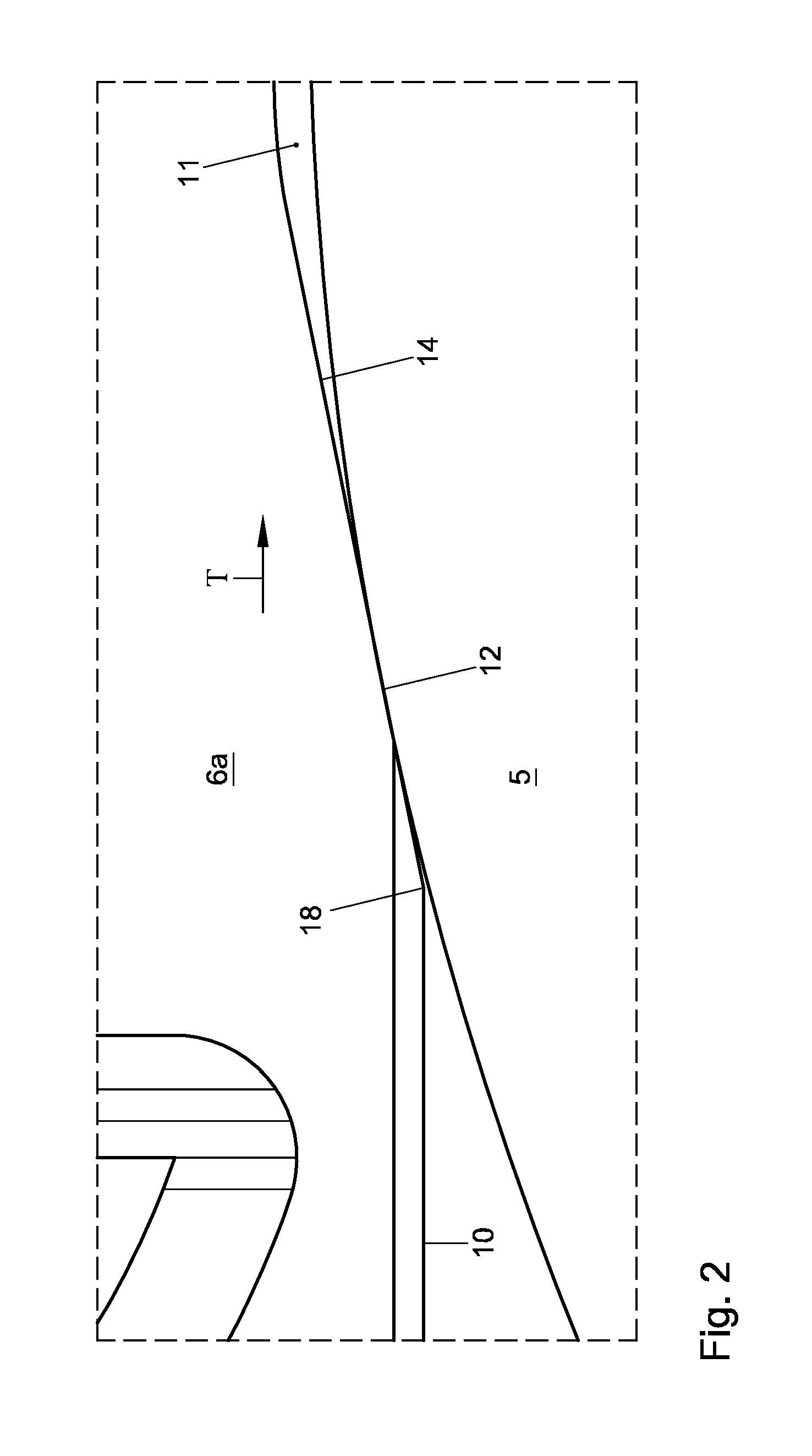Conveying system, and use of a chamber extending inwardly with respect to a plastic module in a conveying system
- Summary
- Abstract
- Description
- Claims
- Application Information
AI Technical Summary
Benefits of technology
Problems solved by technology
Method used
Image
Examples
first embodiment
[0037]FIG. 3 shows a schematic perspective view of a plastic module 6 of a conveying system according to the invention. The module 6 can comprise, for instance, one or more cavities 16 in which drive means can engage for advancing the conveyor mat 3 in conveying direction T. It is noted that the module 6 can also be driven in an alternative manner, as, for instance, with the aid of a gear transmission or by means of a contactless drive, for instance, with the aid of magnets.
[0038]FIGS. 4a-4d show different embodiments of chambers 11 of a plastic module 6 of a conveying system according to the invention. In the embodiments shown, the chamber 11, viewed in conveying direction T, is located substantially centrally between the hinge loops 7 provided at the front and rear side of the module 6. Alternatively, the chamber 11, viewed in conveying direction T, can be placed further forward or, conversely, further rearwards.
second embodiment
[0039]FIG. 4a shows a schematic view of a plastic module 6 of a conveying system according to the invention. The first surface part 14 and the second surface part 15 converge substantially in a direction B inward with respect to the circulating module 6.
[0040]The first surface part 14 can be a first substantially flat surface part 14′ and the second surface part 15 can be a second substantially flat surface part 15′, with the two flat surface parts 14′, 15′ being at a mutual angle a. The angle a is between 0′ and 90′.
[0041]Further, the first surface part 14 and the second surface part 15 can link up with each other in a roof-shaped manner. As the first and the second surface part in FIG. 4a link up with each other at an angle a, a roof-shaped, triangular prismatic chamber 11 is obtained.
third embodiment
[0042]FIG. 4b shows a schematic view of a plastic module 6 of a conveying system according to the invention. The first surface part 14 is a first convex surface part 14″ and the second surface part 15 is a second convex surface part 15″. The first surface part 14″ and the second surface part 15″ are connected by one intermediate concave surface part 16″. Alternatively, the intermediate surface part 16 can also be a flat surface part 16 or a convex surface part 16.
[0043]It is noted that the first surface part 14 and the second surface part 15 may alternatively be connected to each other by several intermediate surface parts 16. Each intermediate surface part 16 can be a flat surface part 16′, as shown in FIG. 4c, a concave surface part 16″, as shown in FIG. 4b, or a convex surface part 16′″.
PUM
 Login to View More
Login to View More Abstract
Description
Claims
Application Information
 Login to View More
Login to View More - R&D
- Intellectual Property
- Life Sciences
- Materials
- Tech Scout
- Unparalleled Data Quality
- Higher Quality Content
- 60% Fewer Hallucinations
Browse by: Latest US Patents, China's latest patents, Technical Efficacy Thesaurus, Application Domain, Technology Topic, Popular Technical Reports.
© 2025 PatSnap. All rights reserved.Legal|Privacy policy|Modern Slavery Act Transparency Statement|Sitemap|About US| Contact US: help@patsnap.com



